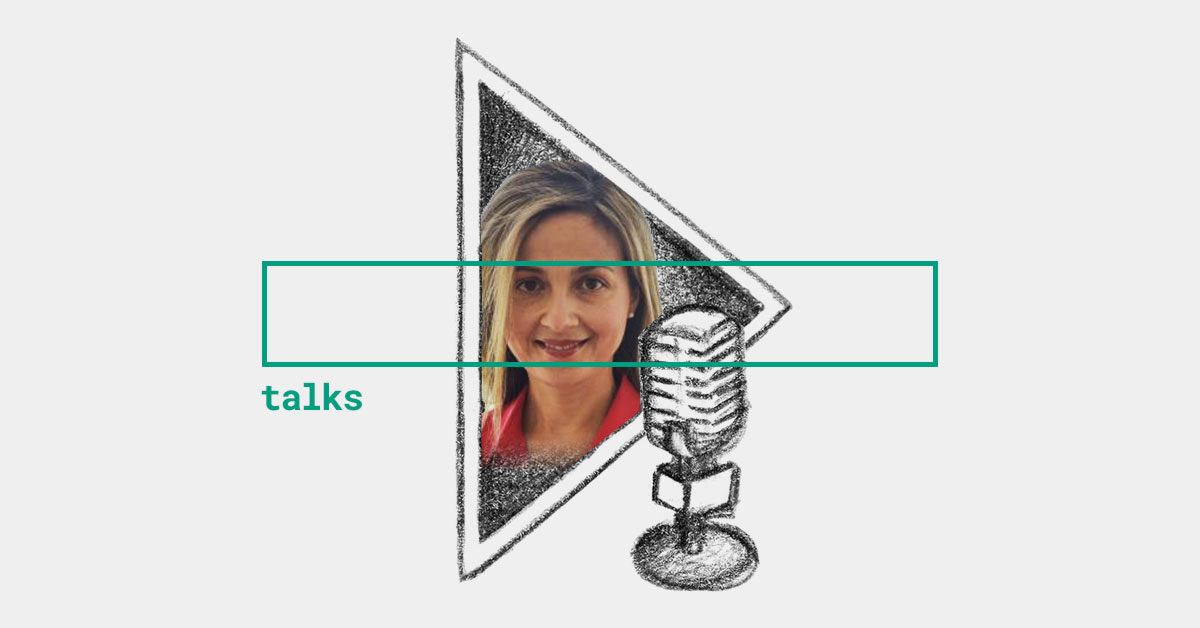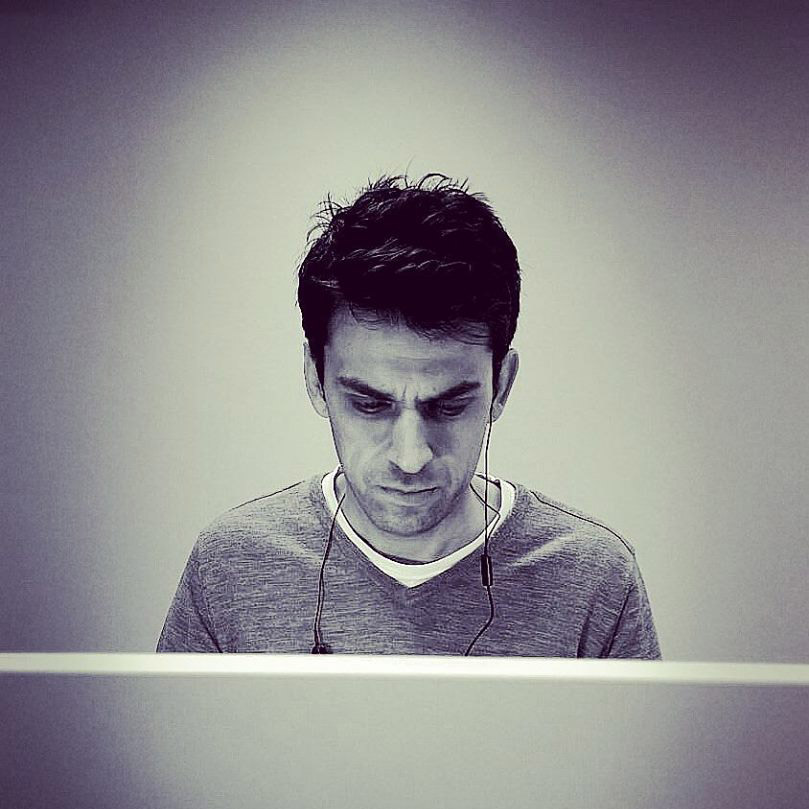Building bridges between academia and startups
The success and future health of any entrepreneurial ecosystem depends heavily on how strong the links are between academia and startups. Close collaboration, especially among university labs, applied sciences and businesses, paves the way towards a win-win situation.

In past Starttech Talks posts around this topic, we’ve examined how businesses can benefit from incorporating innovation. That’s across every aspect of their operations. We’ve also seen how specific big corporations; such as those in the travel industry, can benefit from closer relationships with tech startups.
And, perhaps linked more closely to the subject of this post, we’ve also chewed the fat with Prof. Spyros Lalis on whether there is a common ground between academia and the “real world”. And yes, it does actually exist.
Which, of course, brings us perfectly to our fascinating Q&A with Prof. Maria Papadopouli, Professor at the Department of Computer Science, University of Crete and Institute of Computer Science, FORTH.
Academia and startups: a Q&A with Prof. Maria Papadopouli
Maria visited the Starttech offices in Athens to offer us a different perspective in innovation. One that expresses some key benefits for academia and startups and society in general. Before we get into that discussion, however, here’s a bit more about Maria’s background.
Maria Papadopouli – an introduction
Maria (Ph.D. Columbia University, October 2002) is a Professor in the Department of Computer Science at the University of Crete; and a Research Associate at FORTH-ICS. She has been a Fulbright Scholar at CSAIL at the Massachusetts Institute of Technology (MIT); and a Visiting Professor at the School of Electrical Engineering, KTH Royal Institute of Technology in Stockholm. From July 2002 – June 2006, she was a tenure-track Assistant Professor at the UNC-Chapel Hill. She has been the recipient of IBM Faculty Awards, Google Faculty Award, and Comcast Innovation Fund. She is interested in analyzing complex networking environments.
Maria’s presentation was titled: “The Discreet Charm of Networking: from the Internet to the Brain”. It was focused on two of recent research projects that she and her team have worked on:
GestureKeeper
It’s a gesture recognition system based on simple wearable devices, such as a smartwatch. It’s equipped with an accelerometer, that aims to control devices in an Internet of Things (IoT) environment. That’s by using a dictionary of gestures, together with machine-learning (ML) algorithms.
DysLexML
A machine-learning-based tool for dyslexia screening. They analyzed gaze points recorded via eye-trackers. That was during silent reading of children, in the context of two systematic field studies with 221 participants in total. It was performed by medical experts. Using simple low-cost eye-trackers and ML algorithms, the system achieves an encouraging performance. What’s interesting concerning this project, at least for us, is the fact that her team developed a data augmentation technique. The technique was based on GANs for generating synthetic data similar to the original distributions.
As Maria explained these are examples of interdisciplinary research with potentials for social impact.
Academia and startups: It’s all about teamwork
In terms of what helps to make her work and projects successful, Maria pointed to her talented team.
“I love learning new algorithms and new methodologies. And my students are my fellow travelers in this exciting journey of knowledge. In the context of their M.Sc. or Ph.D. thesis, they delve into a new problem. They become experts in a specific area, and share their in-depth knowledge with the rest of our team. And that helps us all move forward. I am proud of them!”
Crossing boundaries, starting new research activities
Maria also talked with enthusiasm about her new research activity in computational neuroscience. And more specifically on analyzing brain networks. With her team, they aim to understand how information is being transmitted across layers in the brain.
She explained that neocortex is a six-layered structure, consisting of billions of heavily interconnected neurons; whose interlaced activity patterns bestow complex cognitive abilities to higher mammals. The firing patterns of neurons reveal the existence of multi-neuronal modules functionally linked to each other. They are developing network analysis methods to understand how neurons of different types organize into mutually interacting modules to process information in vivo; and how the architecture of these fundamental cortical processing units is modified during learning. Understanding the basic rules that cortical patterns of activity follow to give rise to visual perception will shed light to the circuit pathophysiology of several neurological disorders that affect perception; such as autism, epilepsy, mental retardation. Their research focuses on mouse primary visual cortex. In the context of this research, they have established a strong collaboration with Harvard Medical School.
That’s what Maria shared with us.
Right then. Now let’s give you a taste of the interactive part of our Q&A. That’s when we get the chance to ask questions to our guest speakers on any topic. And, of course, look for answers in parts that are closer to our concerns and give our guests the opportunity to elaborate on them.
Q: The DysLexML project stems from the medical discipline. What are your criteria when it comes to interdisciplinary projects you actively get involved in?
A: “A core aspect of Computer Science is its intersection with other disciplines. It serves various domains by designing algorithms and developing systems/tools to solve problems.
It is important to choose carefully the problem you want to focus on. As an applied researcher, I enjoy focusing on problems with intellectually intriguing questions and potential for societal impact.”
Q: Is it possible for small companies of 15-20 people to have a collaboration with research teams such as yours?
A:“There could be various forms of collaboration. For example, it can be in the form of student internships at the company; or employees attending seminars at the University. Research teams with strong expertise on new technologies or systems can organize these seminars. And they can do it in a way to help employees keep up with new advancements in technology and science.
There could also be networking/hiring activities organized, either at the University or at the company. We can also work on joint efforts in the context of a national or EU funded project. Both employees and research teams can participate in such projects. And finally, even research carried out at the University could be funded by the company.
It is important to have Greek companies investing in research and building stronger long-term connections with the universities. This can be mutually beneficial. In the US, since‘80s, there has been a strong“culture” on this. We need to strengthen this aspect in Greece.”
Dimitris added to Maria’s viewpoint, saying:
“I am optimistic on that part. It’s going to happen, more and more frequently in the near future. I also believe that all research that takes place within universities is a kind of future stage of product development. Startups today research only their market in a way to develop products aligned with the market. In the near future they’ll also focus on research. I believe that soon companies will be able to have their own built-in research teams.”
Maria also shared a few facts concerning advancements in neuroscience that are about to happen in the (near) future. To enumerate, we’ll conclude our post about academia and startups with this interesting and promising part.
Rapid advancements in neuroscience
As Maria explains, the following factors have been catalysts in this progress:
- Sophisticated imaging and monitoring tools that we have at our disposal today. As she explained:
“An example of such tools is the in vivo 2-photon calcium imaging mesoscope. It affords exceptionally large-field of view increasing the yield of the imaging, allowing the acquisition of rich data sets. Interestingly enough, that happens essentially simultaneously, across different cortical layers in fine spatio-temporal scale for long periods of time; and probing tools using state-of-the-art spatial light modulation technology”. - Advanced machine-learning algorithms and powerful statistical analysis techniques that help us analyze the collected data sets,
- and finally, computational power for processing these rich data sets, along with storage power; justifying it with examples of available technologies.
Here’s to crossing more boundaries and building bridges!
